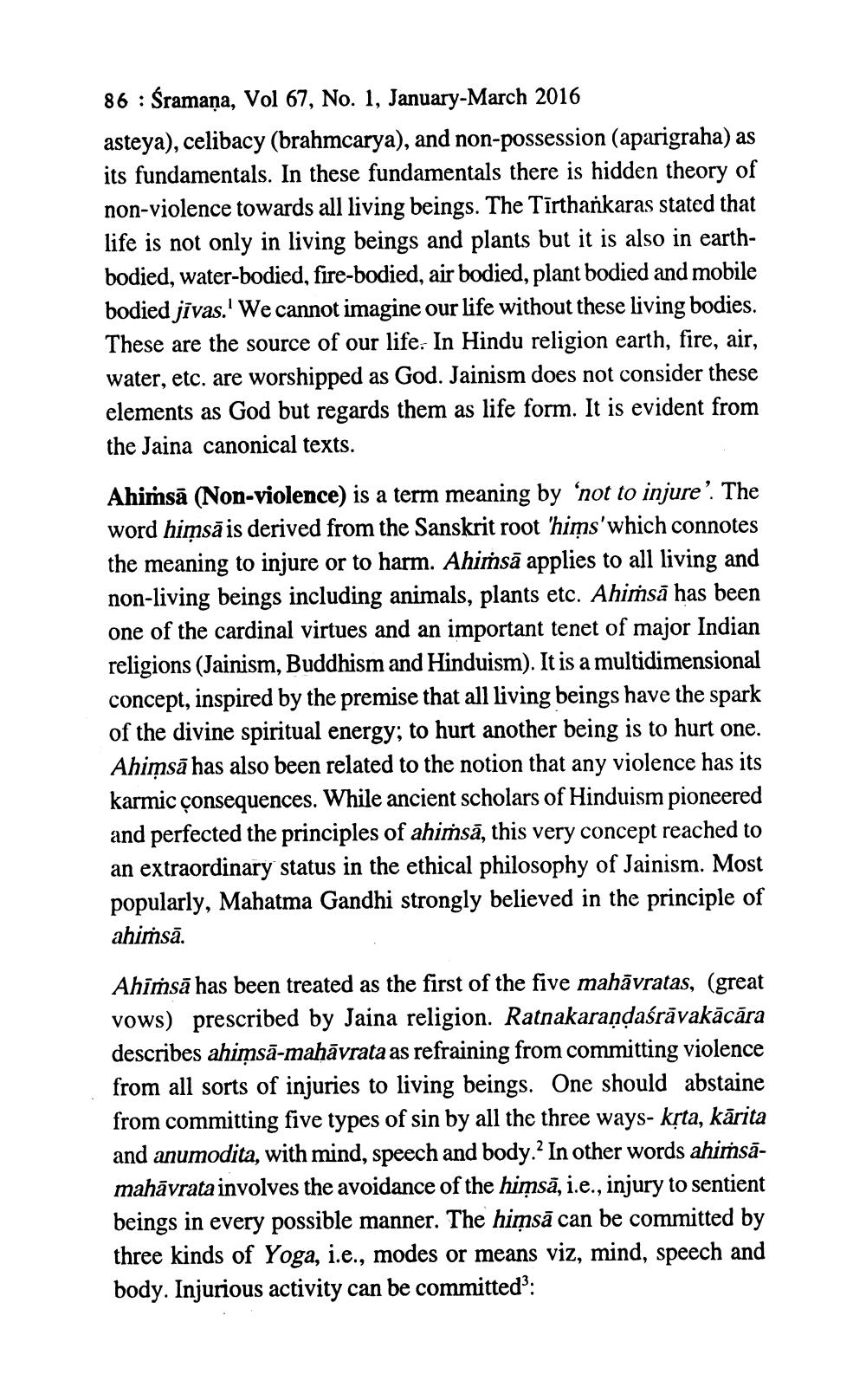________________
86 : Śramaņa, Vol 67, No. 1, January-March 2016 asteya), celibacy (brahmcarya), and non-possession (aparigraha) as its fundamentals. In these fundamentals there is hidden theory of non-violence towards all living beings. The Tīrtharkaras stated that life is not only in living beings and plants but it is also in earthbodied, water-bodied, fire-bodied, air bodied, plant bodied and mobile bodied jivas.' We cannot imagine our life without these living bodies. These are the source of our life. In Hindu religion earth, fire, air, water, etc. are worshipped as God. Jainism does not consider these elements as God but regards them as life form. It is evident from the Jaina canonical texts. Ahimsā (Non-violence) is a term meaning by ‘not to injure? The word hiņsā is derived from the Sanskrit root 'hims'which connotes the meaning to injure or to harm. Ahimsā applies to all living and non-living beings including animals, plants etc. Ahiṁsā has been one of the cardinal virtues and an important tenet of major Indian religions (Jainism, Buddhism and Hinduism). It is a multidimensional concept, inspired by the premise that all living beings have the spark of the divine spiritual energy; to hurt another being is to hurt one. Ahimsā has also been related to the notion that any violence has its karmic consequences. While ancient scholars of Hinduism pioneered and perfected the principles of ahiṁsā, this very concept reached to an extraordinary status in the ethical philosophy of Jainism. Most popularly, Mahatma Gandhi strongly believed in the principle of ahiṁsā.
Ahiṁsā has been treated as the first of the five mahāvratas, (great vows) prescribed by Jaina religion. Ratnakarandaśrāvakācāra describes ahiņsā-mahāvrata as refraining from committing violence from all sorts of injuries to living beings. One should abstaine from committing five types of sin by all the three ways- krta, kārita and anumodita, with mind, speech and body.? In other words ahimsamahāvrata involves the avoidance of the hiņsā, i.e., injury to sentient beings in every possible manner. The hirmsā can be committed by three kinds of Yoga, i.e., modes or means viz, mind, speech and body. Injurious activity can be committed?:




